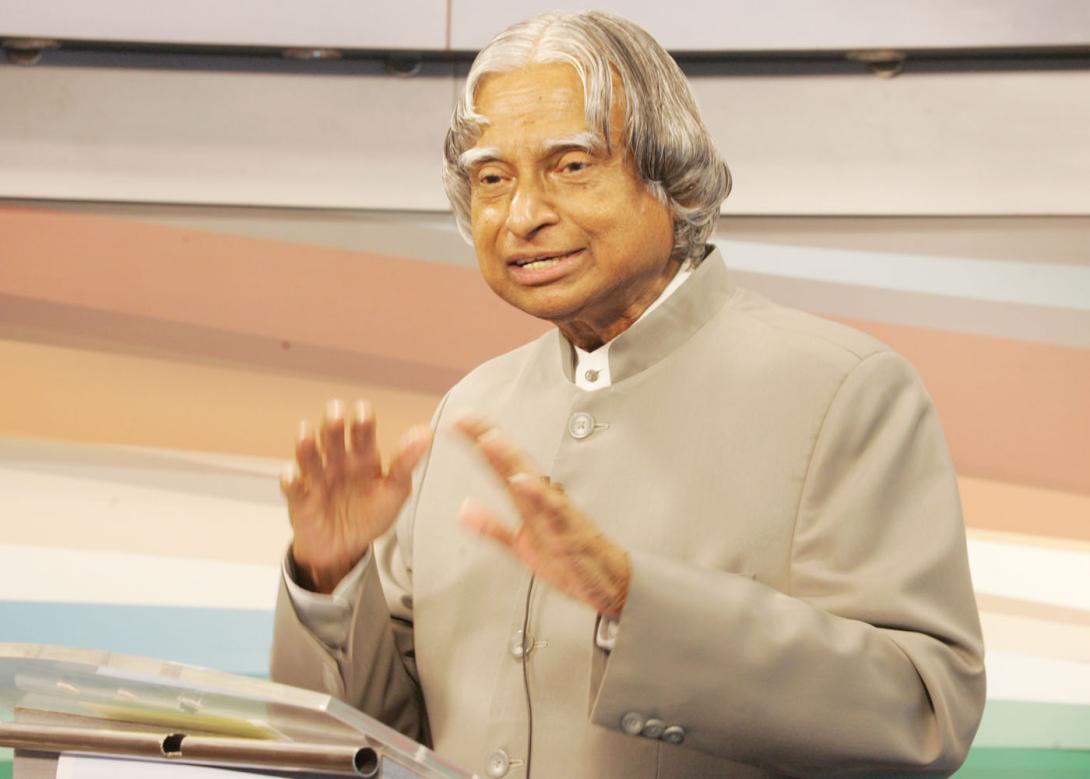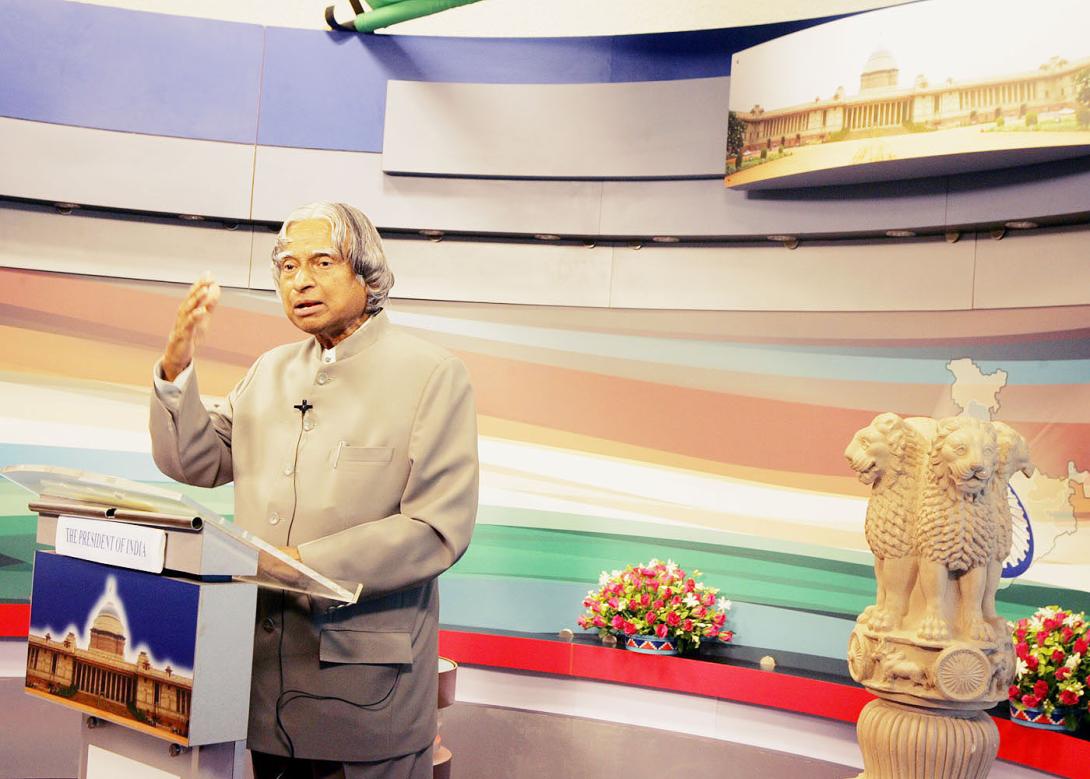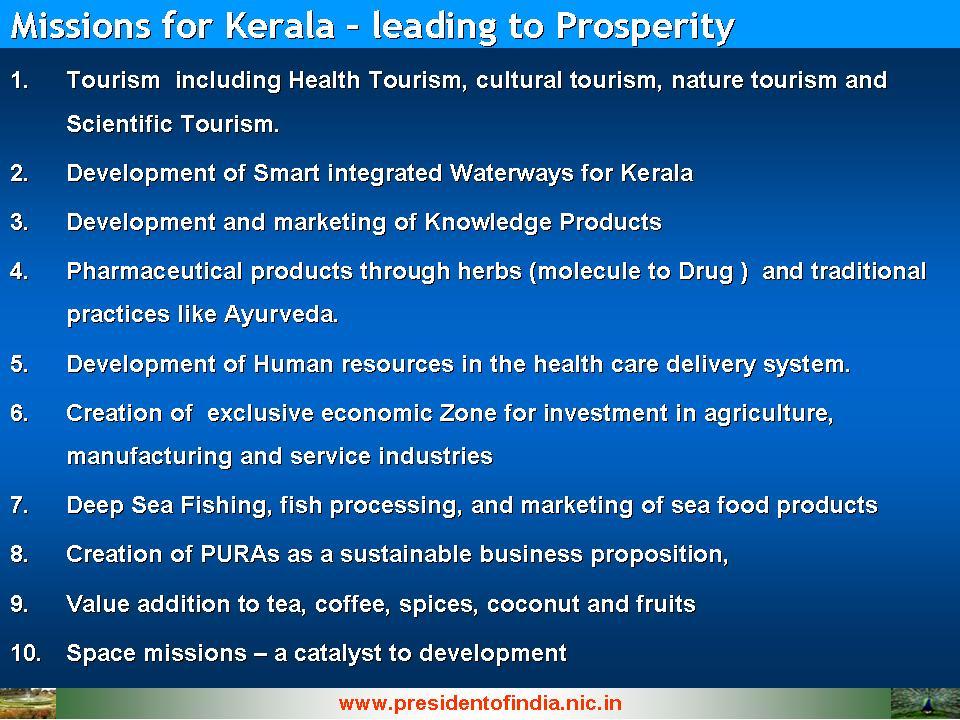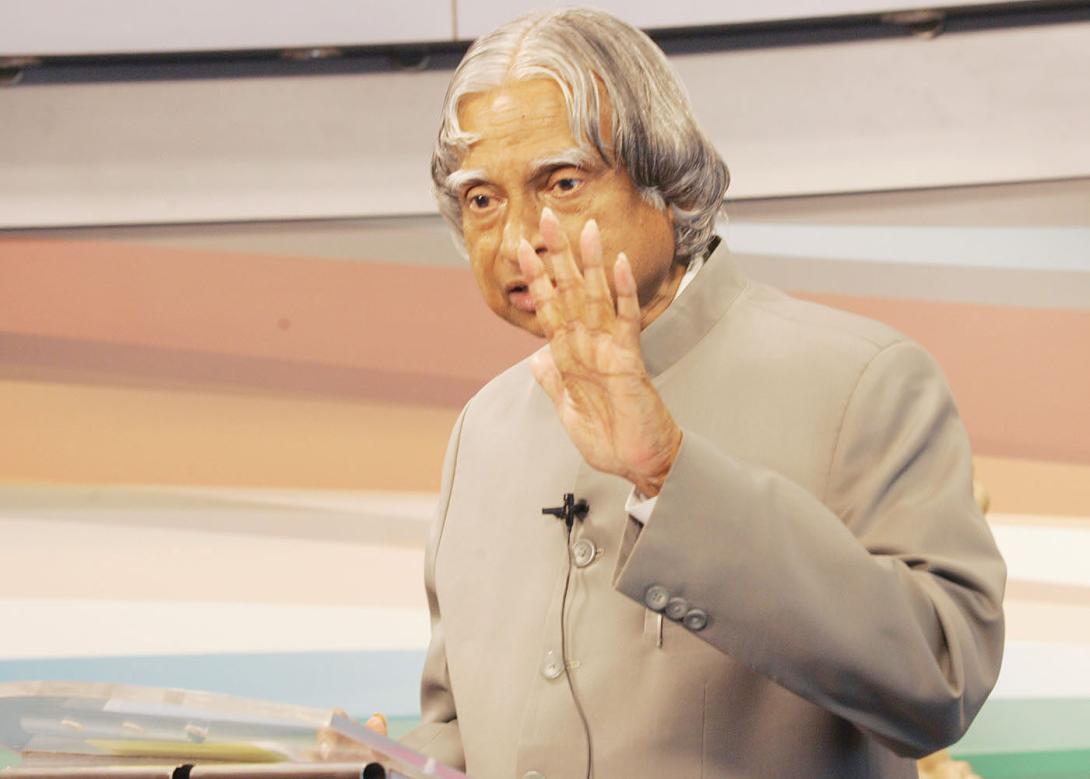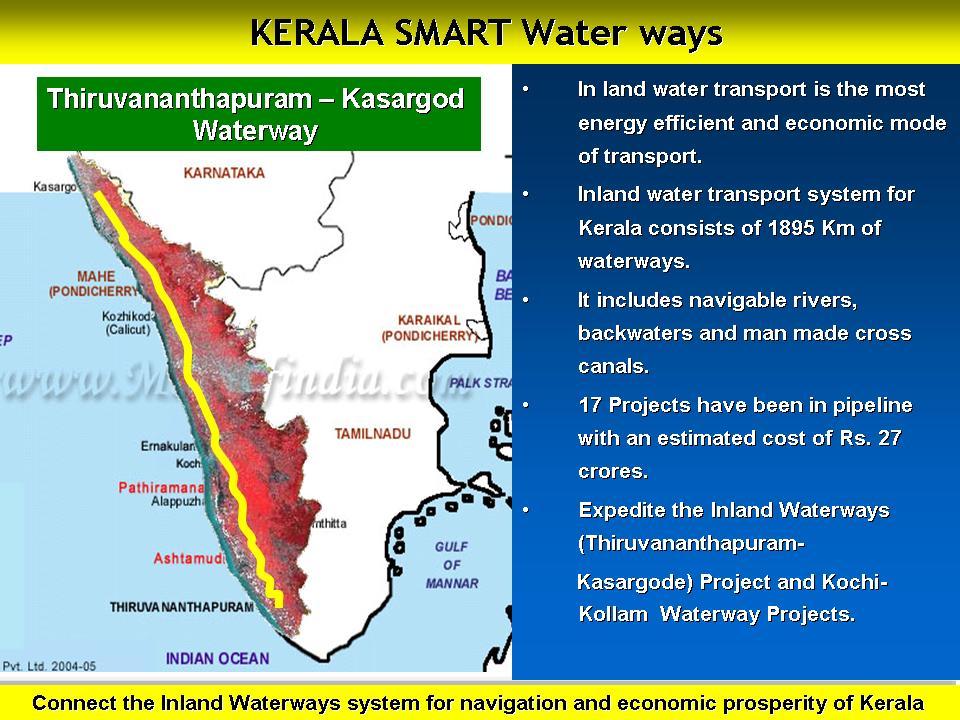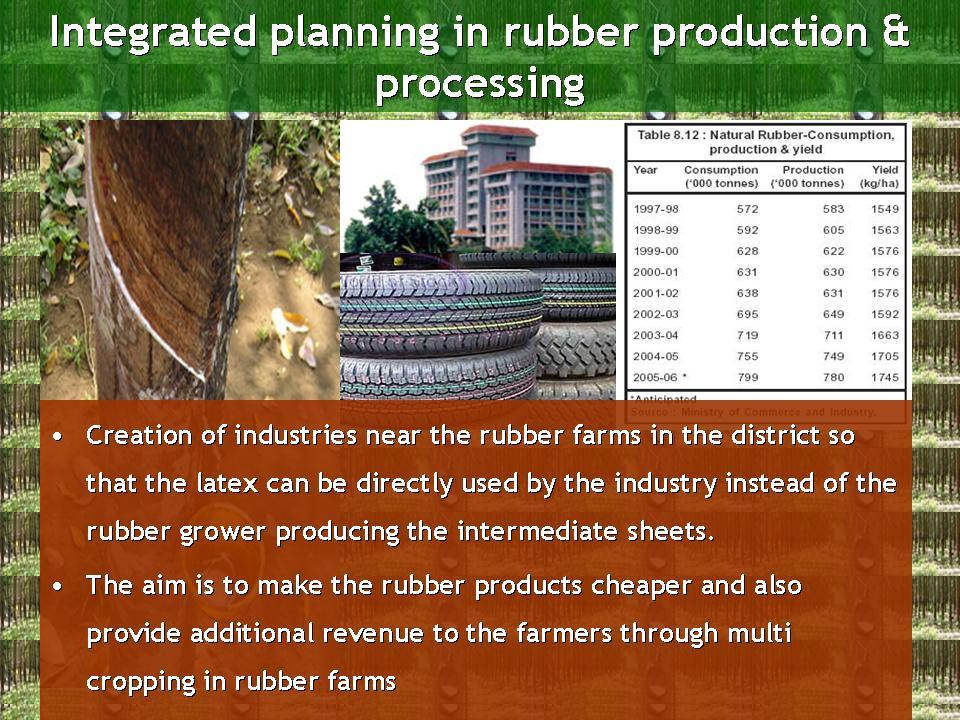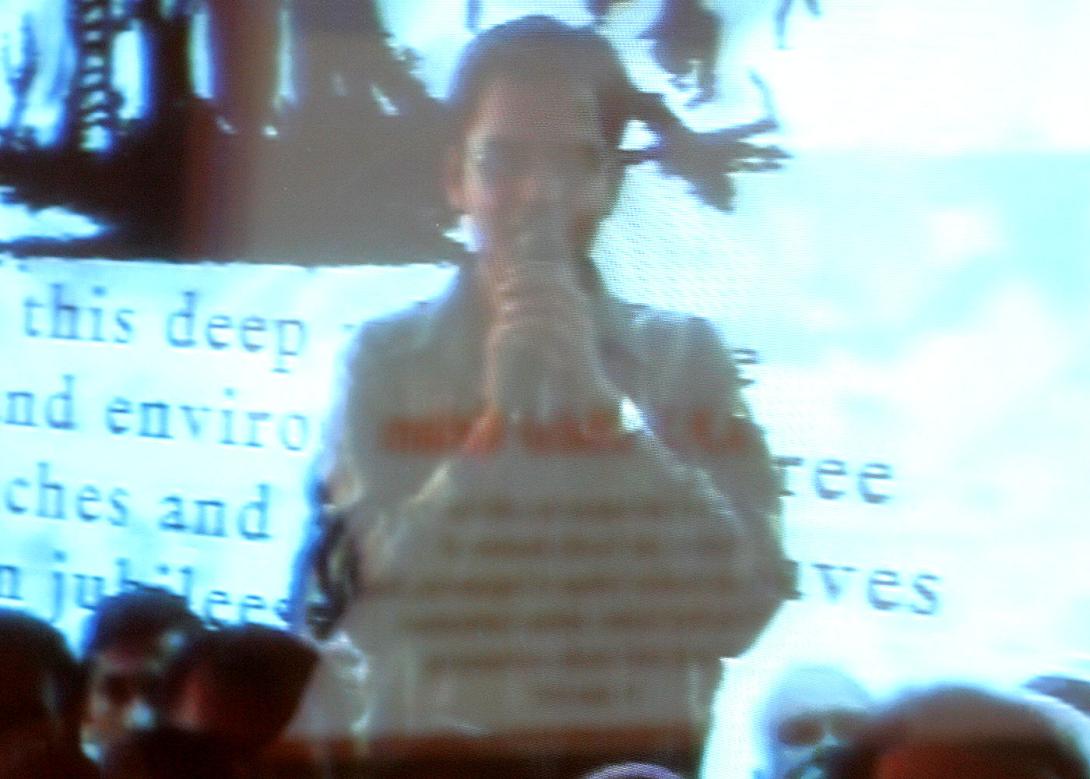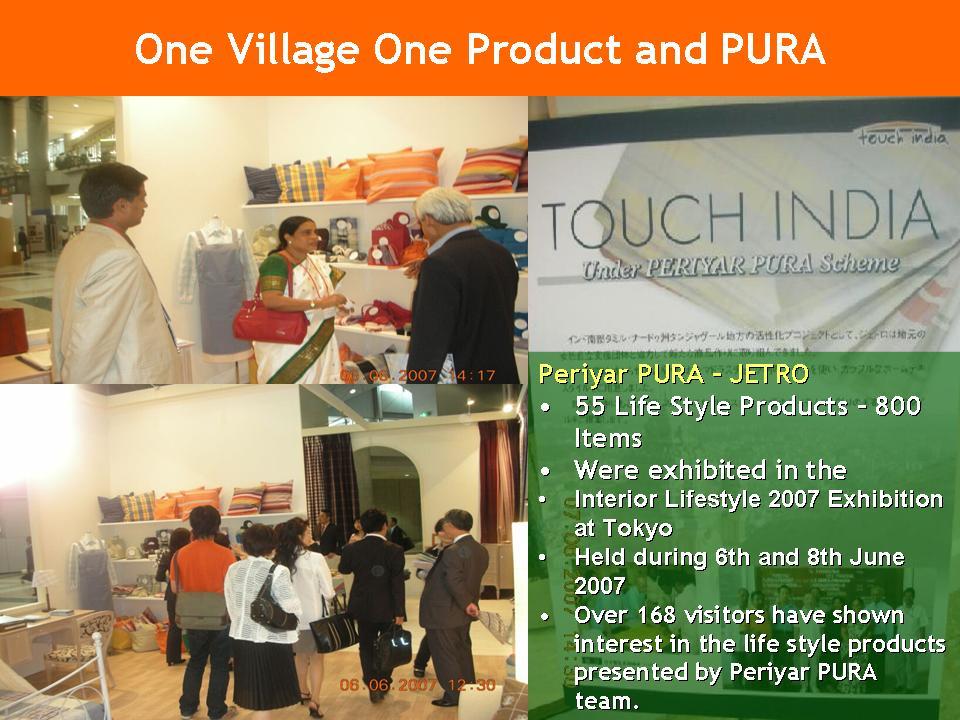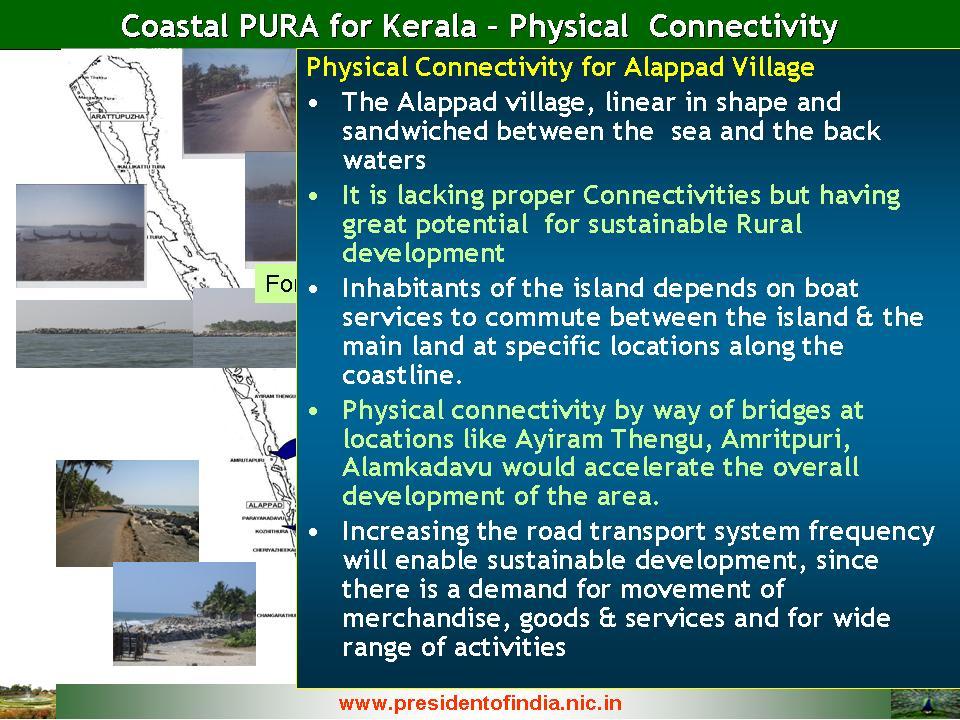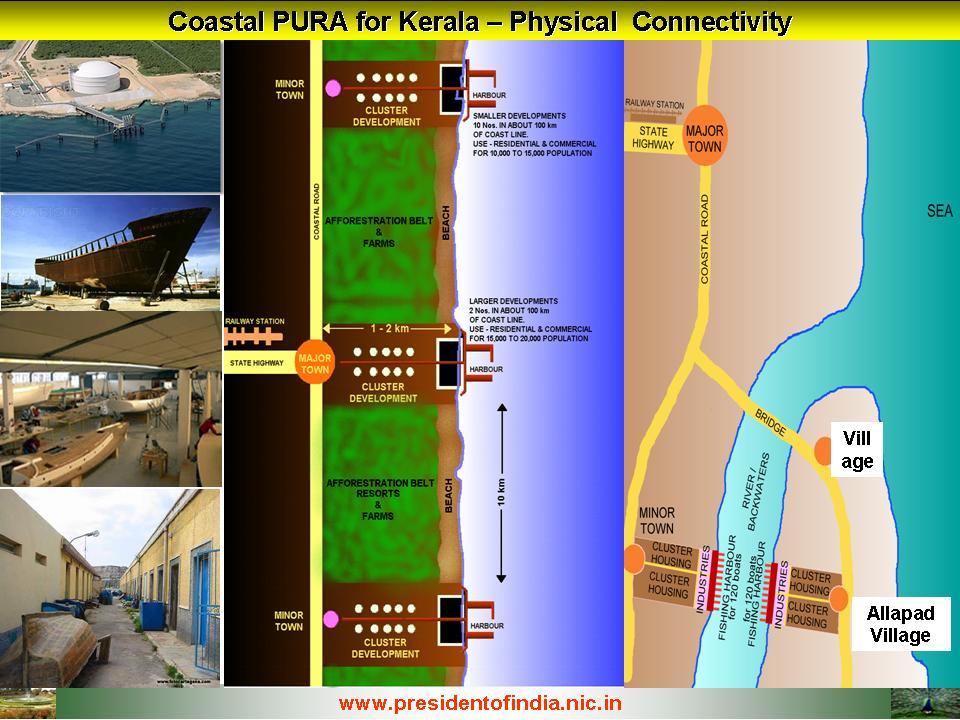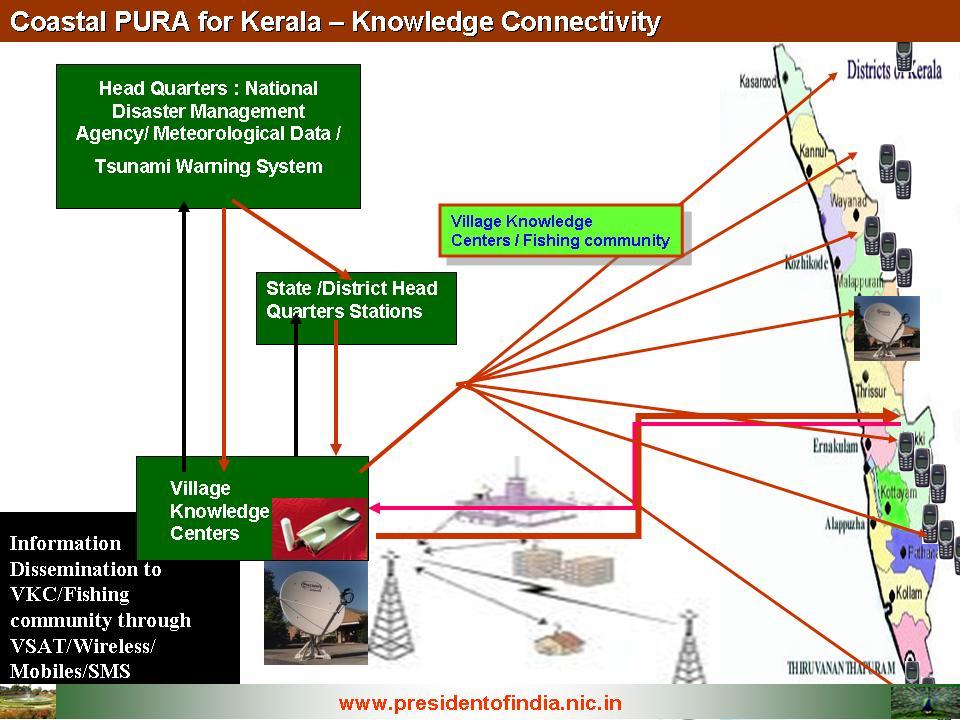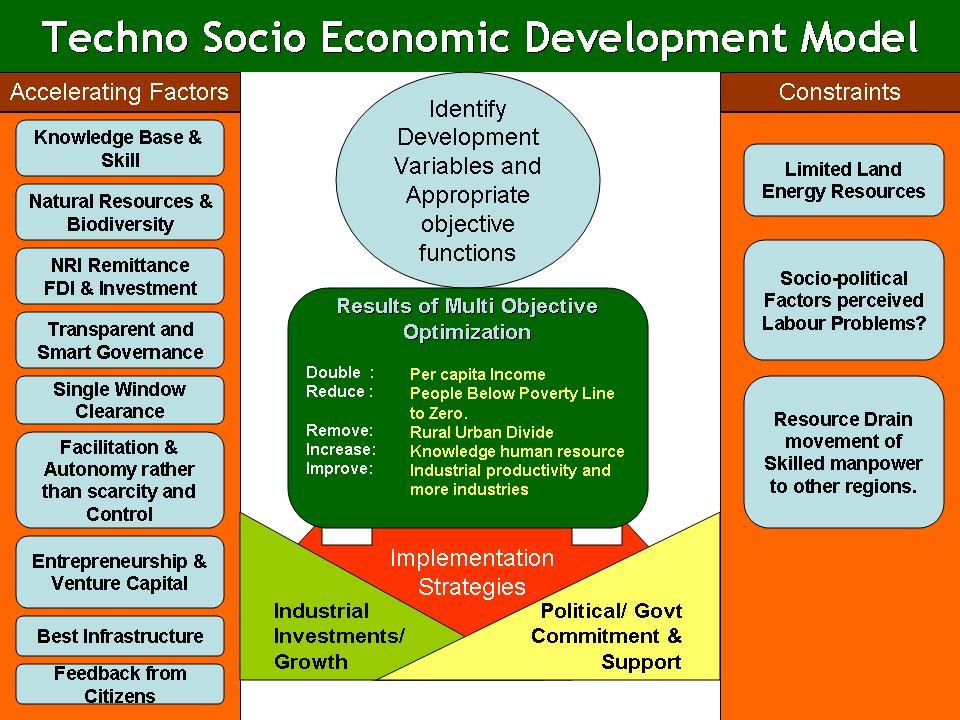Address and Interaction With the Students and Faculty Members of Thangal Kunju Musaliar College of Engineering, Kollam, During Their Golden Jubilee Celebrations Through Multi-media Conferencing, at Rb Multimedia Studio, New Delhi
New Delhi : 19-06-2007
Technology Leads to Non-linear Economic Growth
"Creativity leads to thinking, Thinking provides knowledge, Knowledge makes you great?
I am indeed delighted to participate in the Golden Jubilee Celebrations of Thangal Kunju Musaliar College of Engineering, Kollam, founded by the visionary, Janab Thangal Kunju Musaliar. I am happy that youth empowered by TKM College of Engineering over the years have been working in Kerala, different parts of the country and abroad in areas like R & D, Industry, Education and Public Administration. My greetings to all the Students, Faculty Members, Staff and alumni of TKM College of Engineering. During the last five decades, number of students in the College has increased from 120 students to nearly 2,300 students now and five more institutions have also been created. While I am with you, I would like to discuss on the topic "Technology leads to non-linear economic growth".
Research - teaching - Research
Good teaching emanates from Research. The teachers? love for research and their experience in research are vital for the growth of any institution. Any institution is judged by the level and extent of the research work it accomplishes. This sets in a regenerative cycle of excellence. Experience of research leads to quality teaching and quality teaching imparted to the young in turn enriches research. In the years to come, I am confident that this College will generate a large number of innovators, societal transformers and entrepreneurs with the objective of promoting economic development and prosperity in the Kollam district, Kerala and other places.
While I was in MIT, Chennai, I was assigned a project to design a low level attack aircraft together with four other colleagues. I took the responsibility of aero-dynamic design and the other three took up the design of propulsion, control and instrumentation of the aircraft. My design teacher Prof. Srinivasan, the then Director of MIT, was our guide. He used to constantly review our work and finally ensured that the configuration drawing is prepared within three days. It was an important experience for us to work as a team towards a specific goal. Similar experience can be given to the students of TKM College of Engineering also. Hence I would like to discuss the development aspects of Kerala.
Missions for Kerala
In July 2005, I addressed the Kerala Assembly and suggested undertaking of ten missions by the Kerala State based on their core-competence, which will transform the State into a happy, prosperous and safe State by the year 2015.
These missions are:
1. Tourism including General, Spiritual, Health, Science
2. Development of smart waterways.
3. Development and marketing of Knowledge Products
4. Pharmaceutical products through herbs (molecule to Drug) as well as Ayurveda.
5. Quality training to Nurses and other paramedics.
6. Creation of exclusive economic Zone to attract NRI and other investors.
7. Deep Sea Fishing, fish processing, and marketing of sea food products
8. Establishment of PURAs at the coastal regions to bring prosperity equally to the Urban and Rural population.
9. Value addition to tea, coffee, spices, coconut and fruits
10. Space technology is well established in Kerala. This has to be used for connectivity of Kerala and also enriching the small scale industries, skill training. Starting Joint-Venture between Kerala government industries and ISRO.
I would like to highlight some of the missions in which the students and faculty members of TKM College of Engineering can make significant contribution.
Development of smart waterways
The inland water transport system of Kerala has navigable rivers, backwaters and man made cross canals. What Kerala needs, as visualized, is a major water way extending from Thiruvananthapuram to Kasargod. This will connect the whole State with all other cross canals. In addition, for making effective use of the total waterway potential, existing canals and river water systems are required to be improved to make those into smart waterway systems. A smart waterway will have the characteristics such as: sufficient navigable depth and width; conditions permitting navigation throughout the year; smooth bends and minimum silt; navigable at least 18 hours per day; catering for efficient loading and unloading points; adequate lighting and modern navigational and communication aids. This facility will enable the State to take advantage of the energy efficiency of transportation through waterways which is double of railways and eight times the road transportation system for a given load. This will also reduce the congestion on the road and improve the environmental conditions and afforestation. Hence, there is a need to embark on a mission mode programme to make the total waterways length operational through public - private partnership. The civil engineering, architecture and management departments of TKM College of Engineering and sister institutions in close association with the concerned State organizations can undertake a total study and evolve a techno-economic plan for implementing the smart waterways between Thiruvananthapuram and Kasargod in a time bound manner. They should aim to generate a detailed project report for the mission, which can be submitted to the Kerala Government for further follow up action. This will also turn out to be a good inter-disciplinary effort for the institution including innovative suggestions fully tapping the tourist potential of Kollam region.
Integrated planning in rubber production & processing
Kerala is rich in rubber. While studying the primary processing of making natural rubber, I have found the need for improving the quality for promoting cost competitiveness. The Students and Faculty Members of TKM College of Engineering can suggest creation of industries near the rubber farms in the district so that the latex can be directly used by the industry instead of the rubber grower producing the intermediate sheets. Also, the engineers can work with rubber industries to evolve processes for reducing the energy cost and also the transportation cost. These enterprises can also be advised to use electricity generated through solar farms or bio-mass plants. The reflected light of the solar panels can also provide adequate solar light for growing some short term crops in the rubber farm. The aim is to make the rubber products cheaper and also provide additional revenue to the farmers through multi cropping in rubber farms.
Deep Sea Fishing, fish processing, and marketing of sea food products
Even though Kerala has tremendous potential in deep sea fishing, we have still not gone for deep sea fishing in a big way. When I was in Iceland in June 2005, I studied their economy; their highest per capita income comes from fishing industry. Hence I took interest to study the fishing industry in Iceland. Even though they have a vast sea all around their territory, they have ?sea area silence? that means particular period no fishing boats are allowed to catch fish. This allows sufficient grownup fish catch for the fishermen during rest of the period. Also the sea zones are allotted to the fishermen based on the satellite fish school data. They have satellite surveillance and land communication to safeguard their economic zones, so that other countries do not enter for fishing. But most important thing, I would like to convey is their success in deep sea fishing. I visited one of the very big fish trawlers which have 200 tons fish processing capacity and 1800 tons storage capacity. The deep sea fishing, fish processing, packaging and marketing ? all these aspects are taking place in the middle of the sea. It gives a new dimension to the whole fish industry. At present, Kerala gets fish yield of about 8 lakh tonnes per annum. The students and faculty members of TKM College of Engineering can generate a technology plan for increasing the fish yield to 15 lakhs tones per annum by 2010 by helping fishermen folk with proper communication facilities for the safe return, satellite imagery at right time, boat and fishing net repair facilities and deep sea fishing as is prevalent in many countries. The deep sea fishing should include fish processing, packaging and marketing in the middle of sea.
Improving competitiveness of traditional industries in Kollam region
Cashew, coir and fisheries are traditional industries in the Kollam region, which can be improved through the use of modern technology enabled by TKM College for better productivity, quality and working conditions of the workers. The college can create Centres of Excellence for integrated research for producing branded products, design of improved processes and machinery, modern hygienic environment for working and new technology for packaging and preservation. These Centres of Excellence can have connectivity with leading Academic Institutions, R & D Labs, National Institute of Design and Industries. Now I would like to discuss how TKM College of Engineering can participate in rural development and enable rural community to produce and market internationally competitive products.
One Village One Product and PURA
The members of Periyar PURA in Vallam, Thanjavur district in Tamil Nadu have created a strategic partnership with Japan External Trade Organization (JETRO) of Japan. During the last eight months, people of Periyar PURA villages technologically supported by Periyar Maniammai College of Engineering for Women have worked with experts from JETRO on various products for which core competence and raw material is available in Thanjavur district. They developed proto types for 123 products such as bed sheets, table runner, cushion cover, brass drum, curtains, bread basket etc. Interaction with JETRO specialists included comparison of Japanese product, discussion on raw material selection, technical advice on product development and final quality inspection. Based on this intensive interaction, Vallam people produced 123 products and JETRO selected 55 out of them for international market.
These 55 finalized products were displayed in an exhibition at New Delhi during February 2007 and they have also been displayed in Interior Lifestyle 2007 Exhibition at Tokyo held during 6th and 8th June 2007. Over 168 visitors have shown interest in the life style products presented by Periyar PURA team. The important point I would like to mention is that the local technical consultancy support for improving the product has been provided by Periyar Maniammai College of Engineering for Women, and also JETRO. I would recommend that the members of TKM College of Engineering can consider undertaking a coastal PURA in the Kollam district. Some of the important features of coastal PURA, I would like to discuss with you.
Coastal PURA: Dr. P.S. Rana, who was the then Chairman of HUDCO had made a detailed study on the development of coastal PURA for Tsunami affected areas of Kerala. Design features of the coastal PURA are:
Physical Connectivity:
Construction of jetties and small and medium sized boat landing centres on the coast in the interval of 10 to 15 km range. Each of these will have a good link road to the main coastal road. Some times road transportation may be complemented with waterways. Establishment of Community Sheds for repair of nets, storing the nets and related equipments of the fishing community and Boat building and repair small scale industries.
Electronic Connectivity: All the fishing villages on the coastal areas have to be linked with the District Headquarters through the Broadband fibre and wireless connectivities. Fishing community should be provided with broadcasting facilities through Satellite radios and HAMSAT network. Mobile cell phone with GPS facility may be provided for each boat for emergency communication. This will also provide the local fishing population data, local meteorological and local sea state data through SMS from the Village Knowledge Centres obtained from near by the Meteorological station, Disaster Management stations, District Headquarter station and the other service providers.
Knowledge Connectivity: Government should facilitate the training of fishing community in cost effective safe fishing techniques, application of technology for improving the productivity, storage and preservation systems and cost effective marketing, banking & financing systems through the District Headquarters Studio and the connected village knowledge centers. It will also provide adequate warning data for the fishing community on the sea to return to home safely.
Economic Connectivity: These three connectivities -physical, electronic and knowledge will motivate and enable the local population to create economic centres such as Cold Storage infrastructure, Fish processing and packaging and marketing for realizing the value added price. In addition to this, I would recommend the members of TKM College of Engineering to study the coir products which can be made in the PURA rural cluster since Kollam district is famous for coir products. Aim should be to develop a variety of coir products and cashew processed products in partnership with suitable national and international organizations, so that the product can be marketed in the international market as has been done by Periyar PURA complex. Now let me discuss the simulation study which can be carried out by the students and faculty members of TKM College of Engineering.
Development Simulation Study
I had given the 8 parameter Development Radar, prepared by Planning Commission when I addressed the Kerala Assembly. The Development indicators of the radar included ? Poverty, per capita expenditure, safe drinking water, Pucca Houses, IMR, Life Expectancy, Formal education and Literacy. From Kerala point of view, we need to focus additional attention on the Poverty alleviation through employment generation and increase in per capita income; provision of pucca houses, provision of safe water. I would suggest TKM institutes to develop a multi-disciplinary optimization model for studying the existing techno socio economic performance of the State and work out a scheme for leading Kerala to become a developed state with high employment opportunities, increased per capita income and improved quality of life. This model will address the implementation strategies for increasing the industrial investments and growth, commitment from political system and continuous support from the Government through proactive policies. The model should take into account the accelerators such as knowledge base, education and skilled manpower and natural resources and the constraints such as limited land, energy sources, perceived labour problems and movement of the skill manpower to other regions. TKM College of Engineering, with its multiple departments in engineering, management, mathematics, IT and humanities can develop a multi-disciplinary techno-socio economic model and get enriched with knowledge products and simulation model. Simultaneously, Kerala Government will have a scientific model for providing a development strategy and direction with suitable alternatives. I have talked to Vikram Sarabhai Space Centre (VSSC), Thiruvananthapuram, who have extensive expertise in simulation of complex systems and they will be willing to be your partner in this mission.
Let me now give you few thoughts on how TKM College of Engineering can grow during the next few decades.
New Educational Ventures
As a natural process of growth of TKM Engineering College in the last 50 years, I would recommend the College may initiate measures so that it can become a leading research institution in Kerala, turning out quality internationally reputed Ph.Ds in certain basic science, technology and inter-disciplinary areas, where the college has core-competence.
Now, I would like to share with you the establishment of first Virtual University in India. University of Madras pioneered the creation of Virtual University in partnership with University of Mumbai and University of Calcutta; all the three are 150 years old institutions in India. This Virtual University system has led to the commencement of 10 joint degree, post graduate and Ph.D Programmes. I am very happy that this movement is first of its kind in India. I had inaugurated this programme from Rashtrapati Bhavan, New Delhi through a Multimedia Tele-Education delivery system, where 15,000 students participated. I took the first class for 90 minutes followed by an interaction with the students from all the three universities.
Some time back I visited UAE, where I found large number of persons of Indian origin keen to pursue education in Indian University System. This has also been corroborated during my meetings with many people from Gulf countries visiting India. With the long standing experience of TKM trust in engineering, humanities and management, I would suggest that the trust can take the leadership in creating an engineering institution in the Gulf as a Public, Private partnership venture. This extended wing can have multi-media tele-connectivity between Gulf Campus, Kollam and TKM institutions which can generate education contents for the same. The TKM Trust can evolve this as a Virtual University on the lines that I have described above.
Conclusion
In the years to come, India has to graduate from industrial economy to knowledge economy with emphasis on empowerment of the people besides providing basic needs for all-round development. The education system has to be creative, interactive, self-learning and informal with focus on values, merit and quality instead of being text book based teaching. The workers have to be flexibly skilled, knowledgeable and self-empowered instead of being merely categorized as skilled or semi-skilled. The type of work will be less structured and software driven instead of being structured and hardware driven. Management style will be delegative instead of being directive. The quality of personnel will be knowledge based besides addressing enhanced performance. Impact on environment and energy will be strikingly less compared to being heavy. Keeping these characteristics in mind, TKM College of Engineering may like to work towards generation of human resource for meeting the needs of knowledge economy through suitable modification to its teaching methods, the application of technology, enhancing the connectivity among multiple institutions and creating a research orientation.
Once again let me greet all the students, faculty members and staff of TKM College of Engineering on the occasion of Golden Jubilee celebrations.
My best wishes to all of you for success in every endeavour.
May God bless you.
Dr. A. P. J. Abdul Kalam

